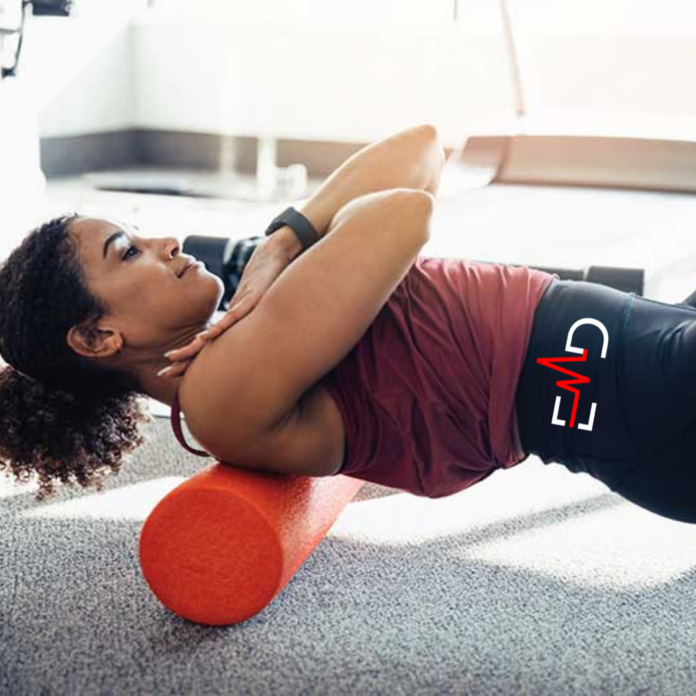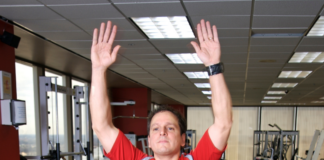Table of Contents
Exercise Daily – Foam rolling is a self-myofascial release technique that helps relieve muscle tension, increase flexibility, and improve mobility. It’s an effective way to reduce the risk of injuries and promote recovery after workouts. In this article, we’ll discuss the seven best foam roller exercises for the back and shoulders that you can incorporate into your daily routine to maintain a healthy, pain-free body.
Foam rolling has gained popularity among fitness enthusiasts and athletes because of its benefits for muscle recovery and injury prevention. It’s a simple and inexpensive tool that can help you get rid of muscle knots, reduce inflammation. And increase blood flow to the affected areas.
Benefits of Foam Rolling
Foam rolling has several benefits for the body, including:
1. Improved Flexibility
Foam rolling helps release muscle tension, which can improve your flexibility and range of motion. When your muscles are relaxed, they can move more freely, reducing the risk of injuries.
2. Reduced Muscle Soreness
Foam rolling can help reduce muscle soreness by breaking down adhesions and increasing blood flow to the affected areas. It’s a great way to speed up recovery after workouts and prevent muscle fatigue.
3. Better Posture
Poor posture can lead to muscle imbalances and chronic pain. Foam rolling can help alleviate tension in the muscles that contribute to poor postures and knee pain, such as the upper back, shoulders, and neck.
4. Increased Blood Flow
Foam rolling promotes blood flow to the affected areas, which can help deliver oxygen and nutrients to the muscles, promoting faster recovery and healing.
How to Use a Foam Roller
Before we dive into the best foam roller exercises for the back and shoulders, let’s talk about how to use a foam roller for the back and properly:
- Choose a foam roller with the appropriate density for your needs. If you’re new to foam rolling, start with a softer roller and work your way up to a firmer one.
- Position the foam roller under the target muscle group and use your body weight to apply pressure to the roller.
- Roll slowly over the affected area, pausing for a few seconds on any tender spots. Avoid rolling directly over bony areas or joints.
- Repeat for 1-2 minutes on each side.
9 Best Foam Roller Exercises for Back and Shoulders
1. Upper Back Roll
The upper back roll exercise is a simple foam rolling exercise that involves lying on your back with a foam roller placed under your shoulder blades. From this position, you lift your hips off the ground and roll up and down from your shoulder blades to your mid-back, allowing the foam roller to massage your upper back muscles. This exercise can help to release tightness and tension in the upper back, improve mobility, and promote better posture. It is a Compound Back Exercise for Building a Stronger Back.
To get the most out of the upper back roll exercise, follow these tips:
- Start slowly: Begin by rolling up and down from your shoulder blades to your mid-back slowly. You can increase the speed and pressure as you become more comfortable with the exercise.
- Focus on the tight spots: If you feel a particular area of tension or tightness, spend extra time rolling back and forth on that spot to release the tension.
- Avoid rolling over the neck or lower back: The foam roller should only be used on the upper back. Avoid rolling over the neck or lower back, as this can cause discomfort or injury.
- Breathe deeply: As you roll up and down, take deep breaths in and out to help promote relaxation and release tension.
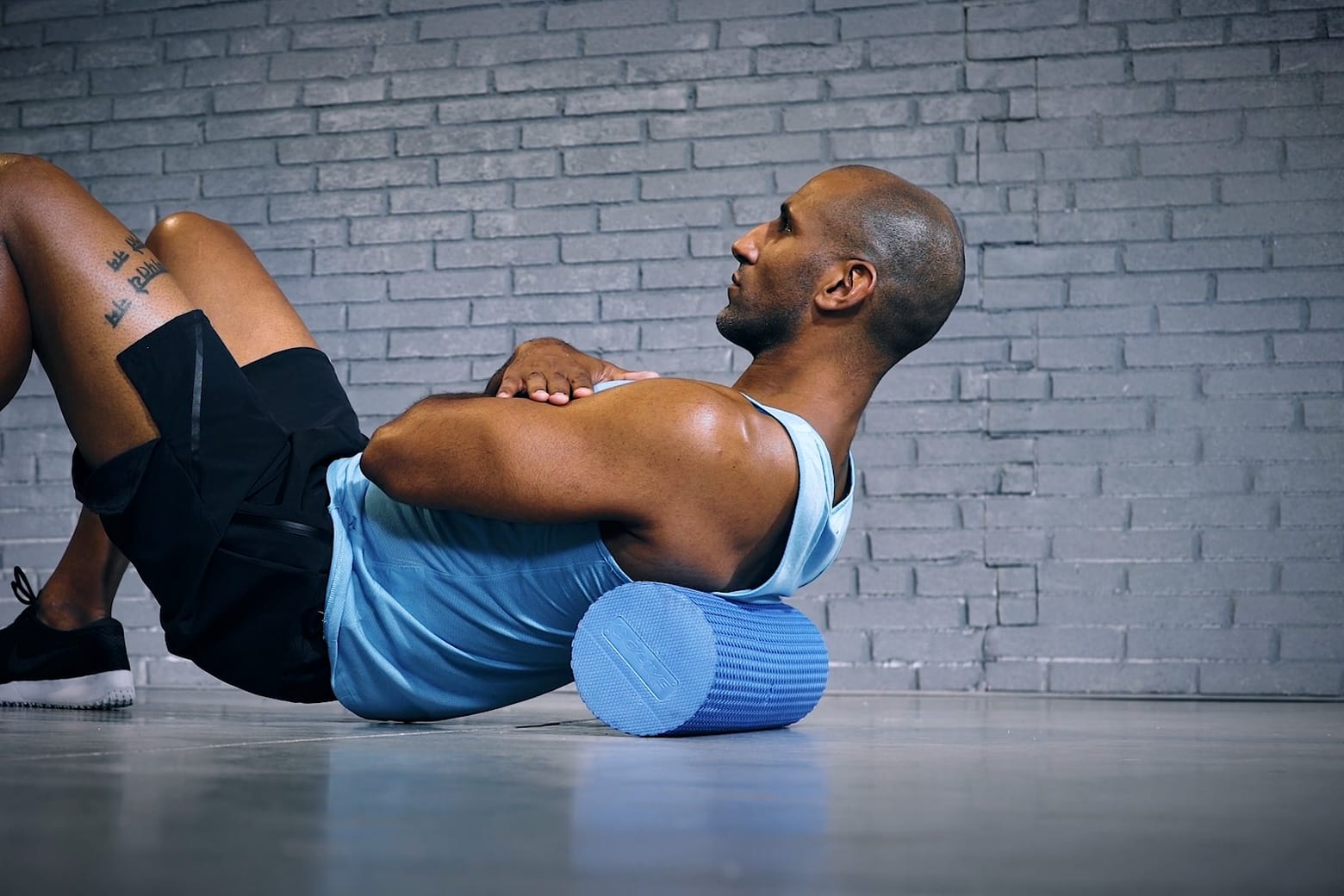
2. Thoracic Spine Roll
The thoracic spine is the middle part of your spine that runs from your neck to your lower back, and it consists of 12 vertebrae. The thoracic spine roll is an exercise that involves using a foam roller to mobilize and loosen the muscles and joints in your mid-back.
To perform this exercise, lie on your back with a foam roller placed underneath your mid-back. Cross your arms over your chest and slowly roll the foam roller up and down from your mid-back to your shoulder blades. Be sure to move slowly and only go as far as is comfortable for you. This exercise helps to increase the range of motion in your thoracic spine and reduce any stiffness or pain in your upper back. You can get relief from Sharp Back Pain When Breathing.
By regularly performing this exercise, you can improve your posture and reduce your risk of developing upper back pain. It’s a great way to target the muscles in your mid-back, which are often neglected in daily activities. It’s important to note that if you have any pre-existing back conditions or injuries, you should speak to your doctor or physical therapist before attempting this exercise.

3. Latissimus Dorsi Roll
The latissimus dorsi is a large, flat muscle that runs the leg straight down along the back of the torso, from the pelvis to the upper arm bone. It is responsible for a number of movements in the upper body, including arm extension and adduction, and plays a key role in shoulder and upper back mobility.
The latissimus dorsi roll is an exercise that involves using a foam roller to target and release tension in this muscle. To perform this exercise, start by lying on your side with the foam roller placed under your armpit. Keep your arm on the foam roller parallel to the same side of your body relaxed and extended above your head, and use your other arm to support yourself on the ground.
Next, begin to roll the foam roller up and down your latissimus dorsi muscle, moving from your left arm or armpit to your mid-back. As you roll, try to relax your body and breathe deeply. You may feel some discomfort or tightness as you roll over knots or trigger points, but this is normal. View Best Foam Rolls for Physical Therapy and select one of them.

4. Pectoral Release
The pectoral release exercise is a type of self-massage that targets the pectoral muscles, which are the large muscles in the chest area. This exercise can help to relieve tightness, tension, and pain in the chest, shoulders, and upper back.
To perform the pectoral release exercise, you will need a foam roller with a wheel design. Here are the steps:
- Lie face down on the floor or a mat with the foam roller positioned horizontally under your chest.
- Extend your arms out to the sides, so they are at shoulder height and form a “T” shape with your body.
- Gently roll back and forth over the foam roller, using your bodyweight to apply pressure to your chest muscles.
- As you roll, you may feel some areas that are more tender or tight than others. Pause on these areas and apply more pressure for a few seconds before continuing to roll.
- Continue rolling for 1-2 minutes, or until you feel a release in the tension of your chest muscles.
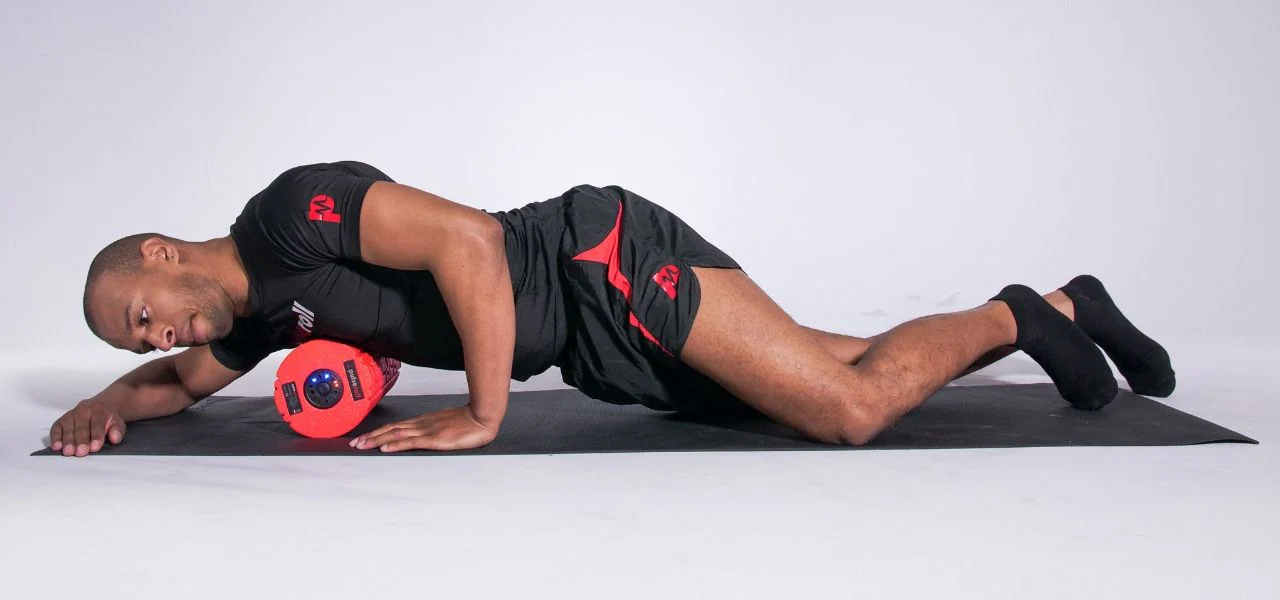
5. Rhomboid Roll
The rhomboid roll is an exercise that involves using a foam roller to target and release tension in the rhomboid muscles. To perform this exercise, start by sitting on the floor with the foam roller placed behind your shoulder blades. Cross your arms over your chest and keep your feet flat on place the foam roller on the ground.
Next, begin to roll the foam roller up and down your upper back, moving from your shoulder blades to your mid-back. As you roll, try to relax your body and breathe deeply. You may feel some discomfort or tightness as you roll over knots or trigger points, but this is normal.
Performing the rhomboid roll regularly can help to release tension and improve mobility in the rhomboid muscles. Which can in turn reduce upper back and shoulder pain. It’s important to note that if you have any pre-existing upper back or shoulder conditions or injuries. You should speak to your doctor or physical therapist before attempting this exercise.
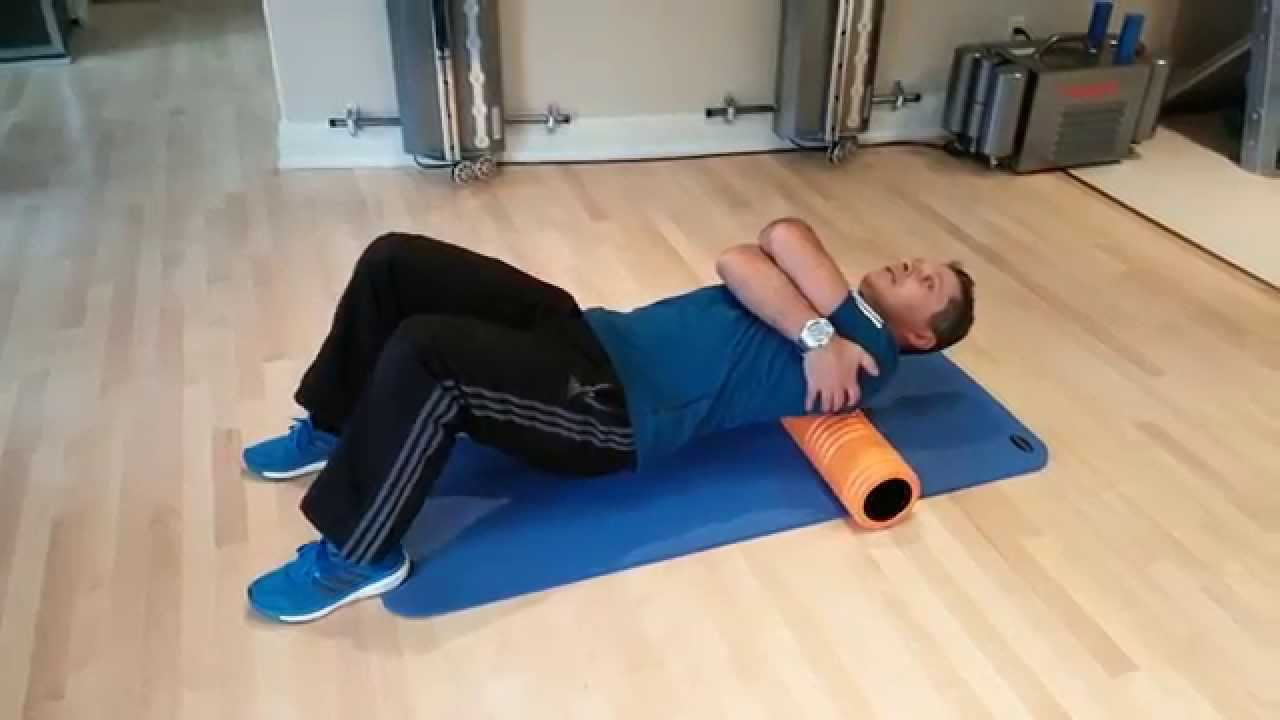
6. Shoulder Blade Roll
The shoulder blades, also known as scapulae, are the flat, triangular bones located on the right leg and back of the ribcage. They are involved in many movements of the shoulders and arms, and have several muscles attached to them. When these muscles become tight or overworked, they can cause pain and discomfort in the shoulder and upper back area.
The shoulder blade roll is an exercise that involves using a foam roller to target and release tension in the muscles surrounding the shoulder blade. To perform this exercise, start by lying on your stomach with the foam roller placed under one shoulder blade. Keep your legs straight and your arms by your sides.
Next, begin to roll the foam roller up and down the muscles surrounding the shoulder blade, moving from the left side of the shoulder blade to the mid-back. As you roll, try to relax your body and breathe deeply. You may feel some discomfort or tightness as you roll over knots or trigger points, but this is normal.
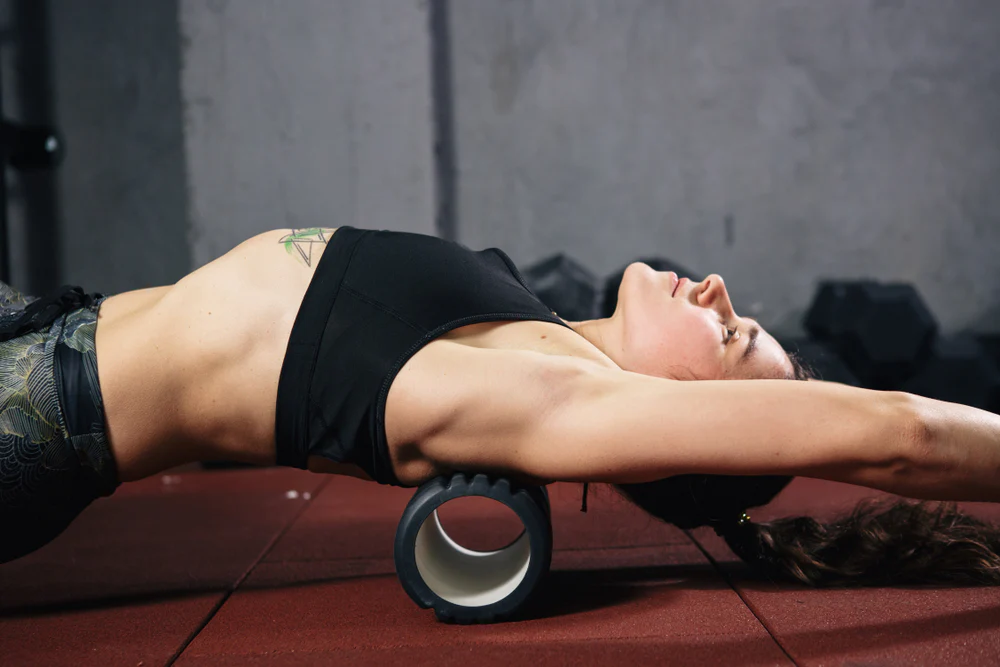
7. Posterior Shoulder Roll
The posterior deltoid muscle is one of the three heads of the deltoid muscle, located on the back of the shoulder. It is responsible for shoulder extension, transverse extension, and internal rotation. When this muscle becomes tight or overworked. It can cause pain and discomfort in the back of the shoulder and upper back area.
The posterior shoulder roll is an exercise that involves using a foam roller to target and release tension in the posterior deltoid muscle. To perform this exercise, start by lying on your back with left foot and the foam roller placed under one shoulder. Keep your legs bent and your arms by your sides.
Next, begin to roll the foam roller up and down the posterior deltoid muscle, moving from the shoulder to the mid-back. As you roll, try to relax your body and breathe deeply. You may feel some discomfort or tightness as you roll over knots or trigger points, but this is normal.

8. Upper Trap Roll
The upper trapezius muscle is a large muscle located in the upper back and neck region. It is responsible for a number of movements of the shoulder and neck, including elevation of the shoulder blades and extension of the neck. When this muscle becomes tight or overworked. It can cause pain and discomfort in the tight muscles of the neck and shoulders.
The upper trap roll is an exercise that involves using a foam roller to target and release tension in the upper trapezius muscle. To perform this exercise, start by lying on your back with the foam roller placed under your upper traps. Which is the area where your neck meets your shoulders. Keep your legs bent and your knees bent and your arms by your sides.
Next, begin to roll the foam roller up and down the upper trapezius muscle, moving the roller horizontally from your neck to your shoulder blades. As you roll, try to relax your body and breathe deeply. You may feel some discomfort or tightness as you roll over knots or trigger points, but this is normal.
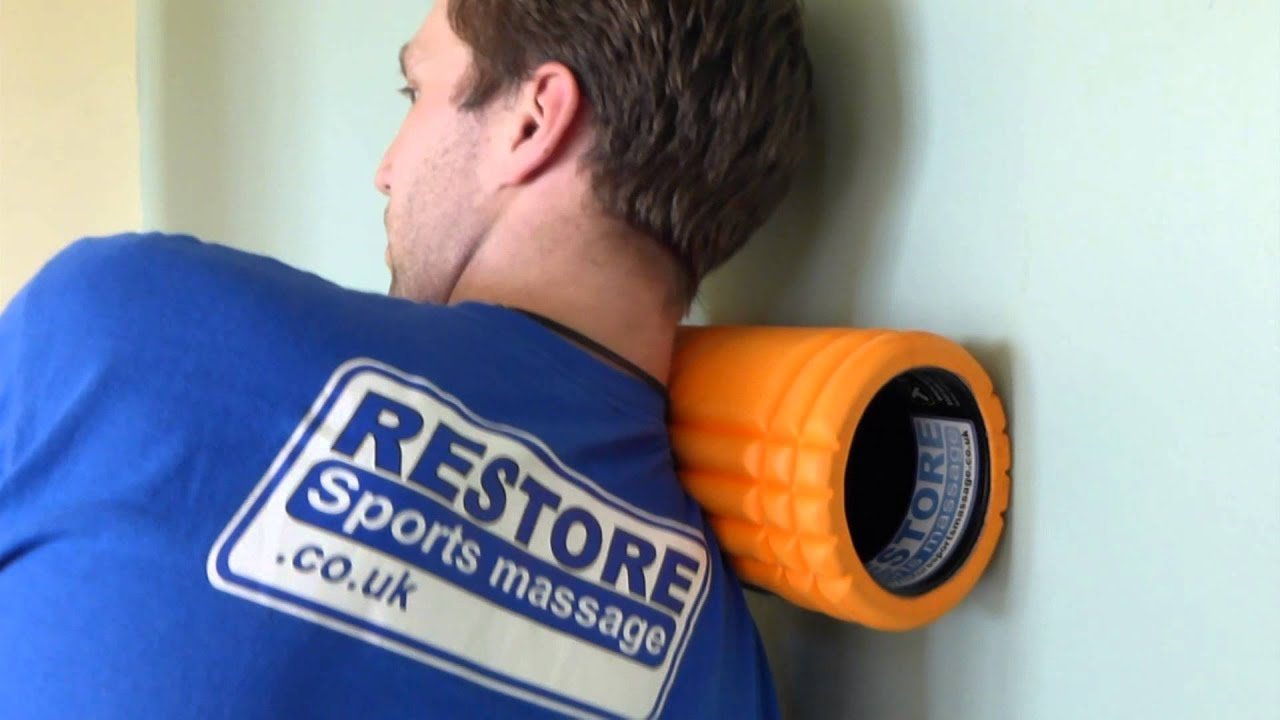
9. Lower Back Release
The lower back release exercise is a self-massage technique that targets the muscles of the lower back. This exercise can help to relieve tension, tightness, and pain in the lower back, which is a common area of discomfort for many people.
To perform the lower back release exercise, you will need a foam roller with a wheel design. Here are the steps:
- Sit on the floor with your knees bent and feet flat on the ground.
- Place the foam roller under your lower back, positioning it so that it is in the center of your back, between your shoulder blades and hips.
- Cross your arms in front of your chest, and slowly lower your upper body down onto the foam roller.
- Gently roll back and forth, allowing the foam roller to massage your lower back muscles. Use your legs and feet to control the rolling motion.
- As you roll, you may feel some areas that are more tender or tight than others. Pause on these areas and apply more pressure for a few seconds before continuing to roll.
- Continue rolling for 1-2 minutes, or until you feel a release in the tension of your lower back muscles.
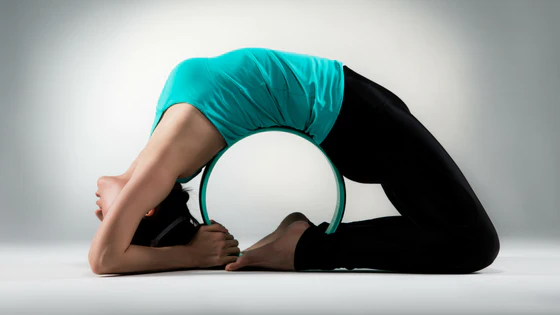
Conclusion
Foam rolling is a simple and effective way to alleviate muscle tension, reduce inflammation, and improve mobility. By incorporating these seven foam roller exercises for the back and shoulders into your daily routine. You can maintain a healthy, pain-free body and prevent injuries. Remember to use a foam roller properly. And start with softer foam roller balls first if you’re new to foam rolling.
FAQs – 9 Best Foam Roller Exercises for Back and Shoulders
Is foam rolling safe for everyone?
Foam rolling is generally safe for most people, but if you have a medical condition or injury, it’s best to consult with your doctor or physical therapist before trying foam rolling.
How often should I foam roll?
It’s recommended to do foam rollers for 10-15 minutes a day, preferably after your workout or at the end of the day.
Can foam rolling replace stretching?
No, foam rolling exercises and stretching are complementary techniques that can improve your flexibility and mobility. Foam rolling helps release muscle tension while stretching helps lengthen the muscles.
What foam roller density should I choose?
If you’re new to foam rolling, start with a softer foam roller horizontally and work your way up to a firmer one. The density of the foam roller depends on your preference and the level of pressure you need.
Can foam rolling help with lower back pain?
Foam rolling can help alleviate lower back pain by releasing tension in the muscles surrounding the lower back. However, it’s important to consult with your doctor or physical therapist before trying foam rolling for lower back pain.


